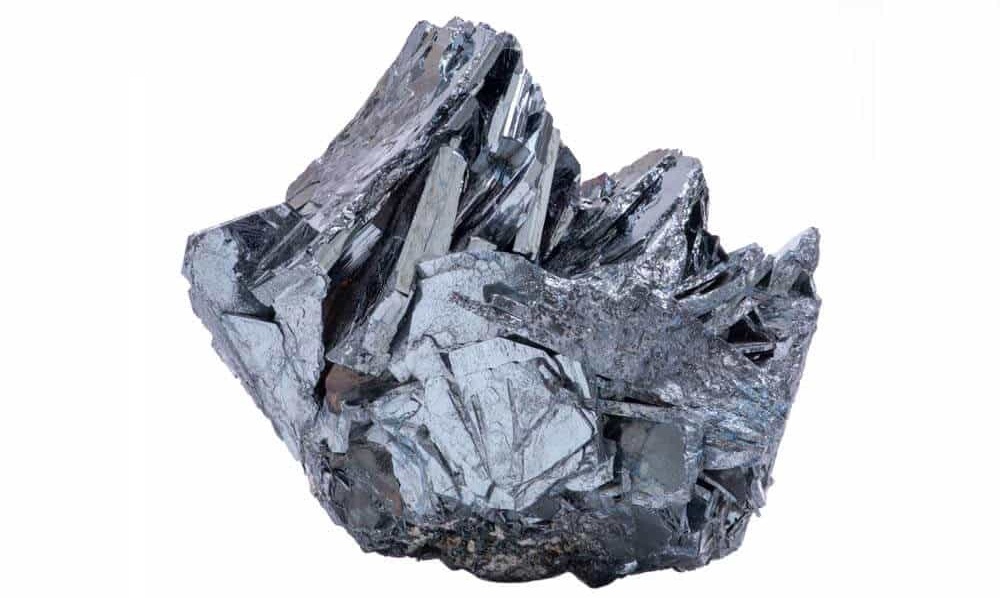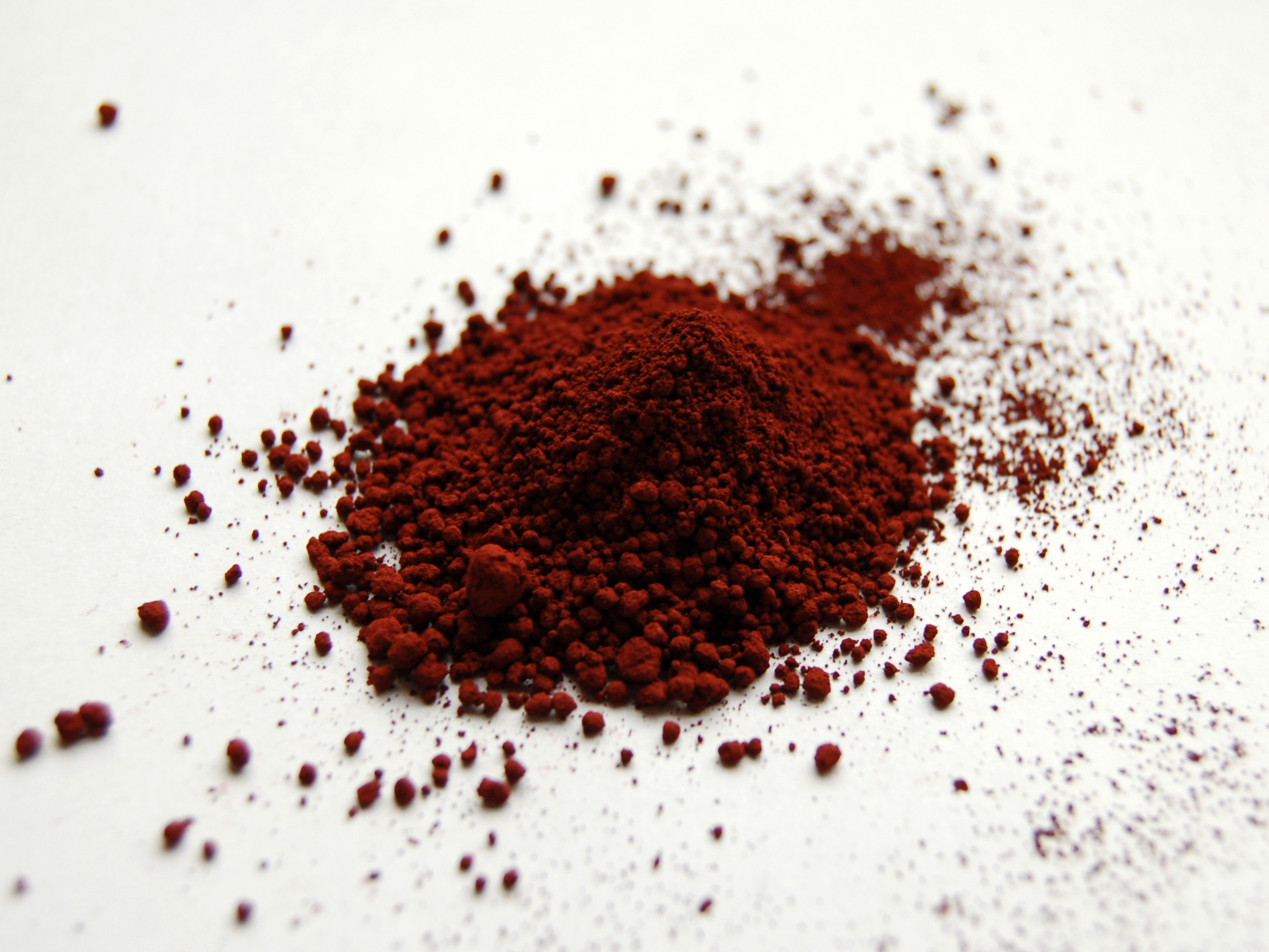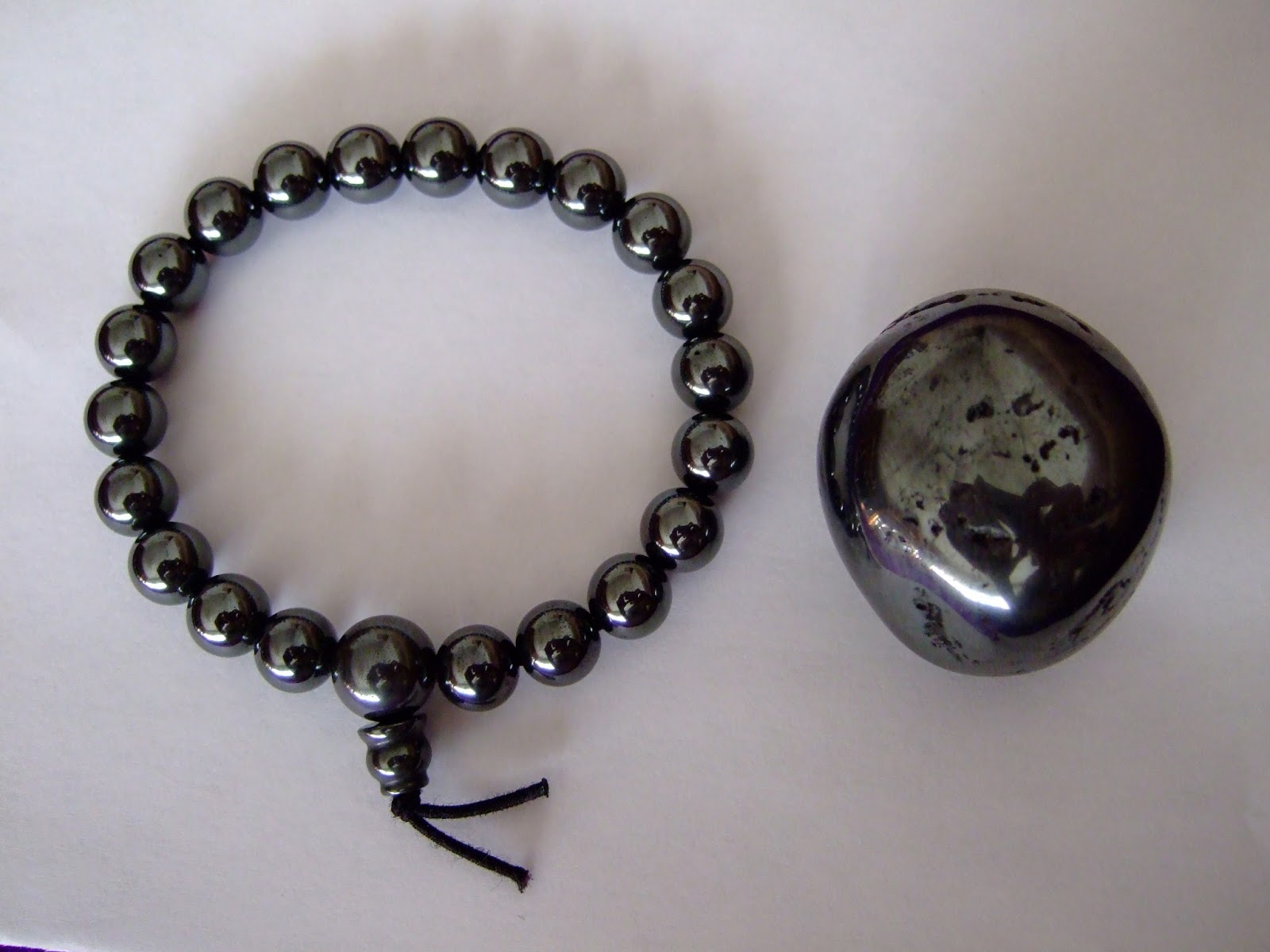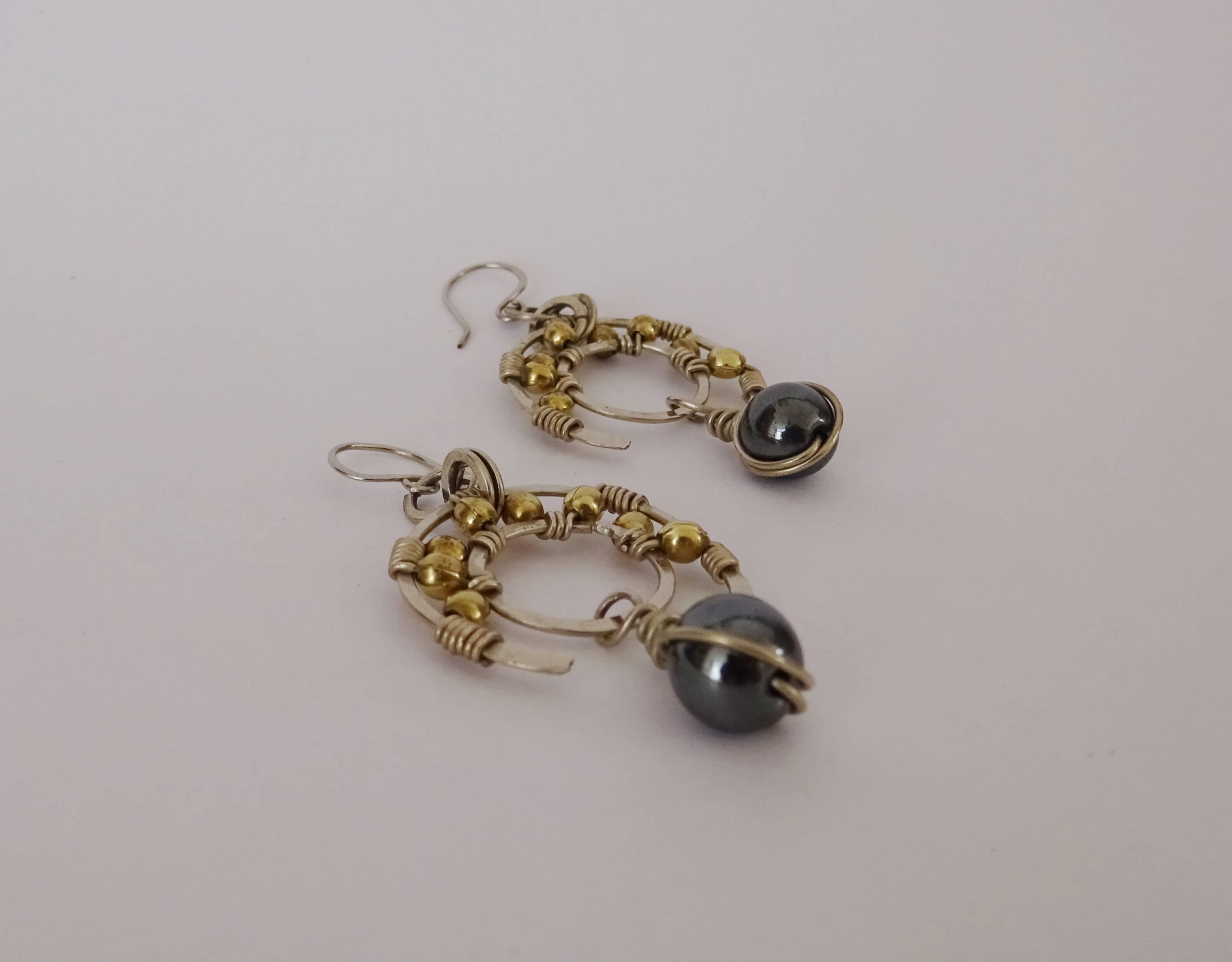La hematite or also called acerina is the mineral form of ferric oxide, this is attributed to be as surprising and interesting as it is beneficial for health and daily life. Stay in this interesting article and you will learn all about it and how to take advantage of its qualities.
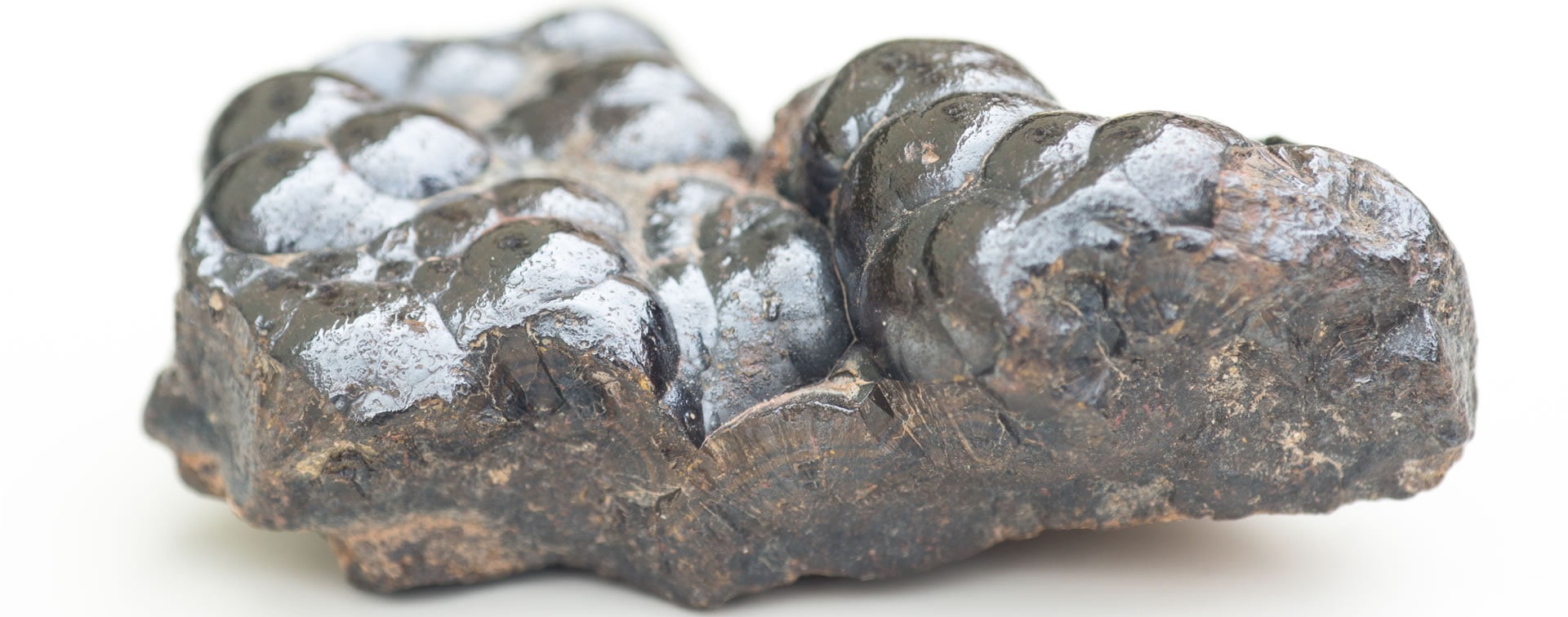
How to identify hematite?
This curious mineral is crimson red in color with slight variations in its hue and when washed tends to stain the water. In the range of colors that a hematite has, the dark gray color always predominates, however from the outside you can see its interior where it shines an intense carmine red.
Types of this mineral
Currently, two variants of hematite are known to exist in the world, which are:
specular hematite: This variation of hematite presents more opaque colors where a silvery gray color predominates, it has a metallic type shine and has a high reflective property that acts as a mirror, from this quality comes its name. It is a mineral produced by the alteration of pyrite and magnetite.
Earthy hematite: This variation is easily distinguishable from the previous one due to its reddish color as well as the fact that it tends to stain the skin when touched and usually stains the water when washed. In addition, this type of hematite has white or transparent crystals that can be calamine, smithsonite, hemimorphite, among other zinc minerals.
legend of hematite
Its name comes from the word 'haematites lithos' which means 'blood stone'. This term was given to it between 30-325 BC by the Greek Theophrastus who preached that this mineral had been produced based on the blood that was shed by the warriors in the battles that took place in the previous centuries, alluding to its striking Colour.
It is possibly the first mineral on record whose name bears the suffix '-ite'.
Hematite Characteristics
The mineral material that forms all the hematite compounds makes it hard, thus surpassing iron among other high-density minerals for its hardness, however it lacks resistance, which makes it more brittle compared to other minerals. It has a density of 5,27 gr/cm3.
A main feature that hematite possesses and that differentiates it from other stones such as goethite, is that an intense red color streak appears in the hematite when it is finely cut. Knowing this feature is a very important notion, since it will allow you to identify it and differentiate it from another range of stones that show a certain color when cut, such as magnetite and pyrolusite.
A peculiarity that differentiates hematite from other minerals in its category is its inability to produce a magnetic field without being directly exposed to high temperatures.
The origin of this material can be derived from hydrothermal conditions, it is commonly found in metasomatic deposits and is capable of being incorporated into igneous rocks, however it is not usually found in conditions produced by weathering.
Properties
Hematite has many peculiarities of great study interest. The red color with ochre, dark gray and silver gray masses are essential for visual characterization and make it easily recognizable together with its silver colored crystals.
We invite you to take a look at this article to learn about the stones according to the horoscope.
Among other attributes that facilitate its distinction is its reflective quality; Hematite takes on a white or grayish-white color when light is reflected, acquiring a bluish pigmentation with intense red tones and reflections that are usually related to the color of blood.
Treating it with hydrochloric acid can be a revealing aid when it comes to identifying its components, since this mineral can dissolve slowly, thus revealing crystals that are part of its structure.
Composition:
It has traces that come from material forms of inorganic origin, among these we can find: titanium (Ti), aluminum (Al), manganese (Mn) and water (H2O). In its pure state, it contains 69% iron.
It has a remarkable refractive index of nω = 3,150 – 3,220; nε = 2,870 – 2,940. It also has a trigonal crystal system.
https://www.youtube.com/watch?v=i3zUrNaSSDU
Major deposits of hematite
Although previously the exploitation of this stone took place in many parts of the world, at present the production and export comes from a very small number of deposits. It should be noted that this is the result of large investments that allow the industry to extract and process hematite.
Today this stone is mined mainly in countries such as South Africa, Canada, China, Australia, Venezuela, Brazil, India and Russia; however, European countries such as Switzerland, Italy, France and Spain have locations where we can find deposits rich in this stone, with Spain standing out among the few European countries where the mineral is found. There are also deposits in Myanmar and Nigeria that excel gemologically.
Uses of the mineral
Both today and in ancient times, the different utilities provided by stone have been used, leaving traces of its presence in the works of human beings even more than 40.000 years ago. Hematite, however, does not have great economic importance, however, it is a resource of great value for the use of man in history in other sections.
Early ancestors used crushed stone to leave their mark on cave walls, while the Romans used it as war paint. Currently it is easy to find it as an industrial material for pigmentation, as a polishing agent and in the manufacture of enamels and dyes.
There is redundant evidence that this mineral was used approximately more than 15 thousand years ago as a red paint, since quantities of earthy oligist were found in the caves of Altamira.
It is recorded that in the past, the specular variation of hematite was used for the manufacture of mirrors. This fact is evidenced by the discovery of the presence of this stone in mirrors that were found in Egyptian tombs. On the other hand, the earthy variety was not only used as a pigment but also fulfilled the function of marking cattle.
Hematite: stone of the pilgrims
This stone is also known in certain localities as the stone of the pilgrims. This is due to the fact that the tourists who arrived in Santiago de Compostela took some souvenirs from one of the local deposits. In this way the stone gained great fame among the community of tourists and pilgrims, as well as being a local symbol.
Due to its pigmentation quality, this mineral can be found in numerous ancient works of art. There is data from works of rock origin dating back more than 40 thousand years where the color of this mineral is present.
Health benefits
Man knew how to take advantage of all the qualities of this valuable mineral that has passed from generation to generation as a useful resource that has many benefits for the individual's health. Among some of the factors of great help provided by this gemstone we can find:
- Regulates and balances body fluids.
- It stimulates antibodies by strengthening the immune system.
- Helps to exercise blood purification.
- Helps make more red blood cells.
- Stabilizes blood flow.
- Helps reduce and eliminate breast tumors.
- It has great curative value against prostate cancer.
- Anticancer qualities are attributed to it.
- It can be used as an analgesic or anti-inflammatory when rubbed on the body.
- It can be of great help against anemia.
- Prevents and controls menstrual problems.
- It is responsible for minimizing bleeding problems such as hemorrhage, among others.
- It has factors that encourage and enhance regenerative qualities, thus accelerating recovery from surgical interventions, scars, and damaged tissues.
- The water in which the stone is soaked is used to apply rapid treatment in areas suffering from muscle spasms and contractions.
- Helps the body maximize the iron absorption process.
The acerin or hematite is used as a medicine for fevers, flu, pain, among many, standing out as a stone of great value in the medical field.
Among other benefits that the handling of this stone brings to the human body is the increase in orgasms. It is also responsible for raising libido among other benefits that enhance sexual activity when used.
Benefits on a spiritual level
Over time, hematite has passed from generation to generation as an amulet of great spiritual value. Since ancient times it has been used as a tool to open the body's chakras and bring them into balance. Learn in this interesting article about the different chakras of the human body and how to open them.
When used as a personal accessory it grants beneficial energies such as:
- It empowers and develops the willpower of the individual.
- Clarifies and stimulates thought.
- It has factors that repel lustful desire.
- Repels and inhibits the addictions of consciousness.
- Helps to overcome past traumas.
- It attracts good luck if used as a talisman.
- It keeps the individual away from possible catastrophes and accidents.
- Activates protection against bad energies directed towards the individual.
- Strengthens the abilities of the intellect.
- It stimulates the focus and concentration of the individual.
- Optimize positivity and clear distractions.
- Strengthens a person's attraction to others.
Recommendations for use
Generally, hematite is worn as an amulet carved in the shape of an animal, thus varying its effects in relation to the animal.
If the hematite is carved like a lion's head, it will tend to bring value and courage to the individual above other things, on the other hand, when carved in the shape of a horse's head, the amulet will focus its energies on optimizing and improving potency. sex of the person who possesses it.
To stimulate the inner power of the individual, it is necessary to hold it with both hands, enhancing the soul-body connection and cleansing the spiritual energy extensively. It is known in astral therapies that the most recommended way to achieve the maximum effectiveness of this method is to carve the stone in a spherical way, the more spherical the result, the more successful it will be.
Warnings
It is necessary to record the awareness that the individual must have to avoid the prolonged use of said stone. It is not recommended to use hematite for more than eight hours, because it is capable of absorbing internal energy, both vital and intellectual.
Much less recommended is the intake of hematite or derivatives of this type of mineral. Most stones and minerals like them, contain chemical compounds that could have serious repercussions for the body.
Relationship with air pollution
Recently, a de-contamination process of the atmosphere that is highly related to hematite has been studied. This process makes use of compounds such as titanium oxide found in this mineral to inhibit the harmful effects of NOx in the atmosphere. However, this finding is more effective in areas with certain conditions of ultraviolet activity, such as in locations where there are more hours of sunlight.
This method has been developed as a profitable alternative for the reconstruction and de-pollution of the atmosphere.
What is the meaning of hematite?
The stone is known to be very energetic and to create an atmosphere of lively tranquility. This is responsible for dissolving and repelling all those bad energies present, as well as attracting, focusing and multiplying positive energies and vibes. It is a great effective method that humans have used to stabilize and balance emotions, bring harmony and peace and protect the parcels of those who possess it.
In the zodiac, the stone, along with other minerals such as amethyst, tiger's eye, ruby and red jasper, represents the sign of Aries, thanks to its reddish tones and its qualities to attract positivism, harmony and prosperity.
If you are interested in this article, learn about many more precious stones here and choose yours.

